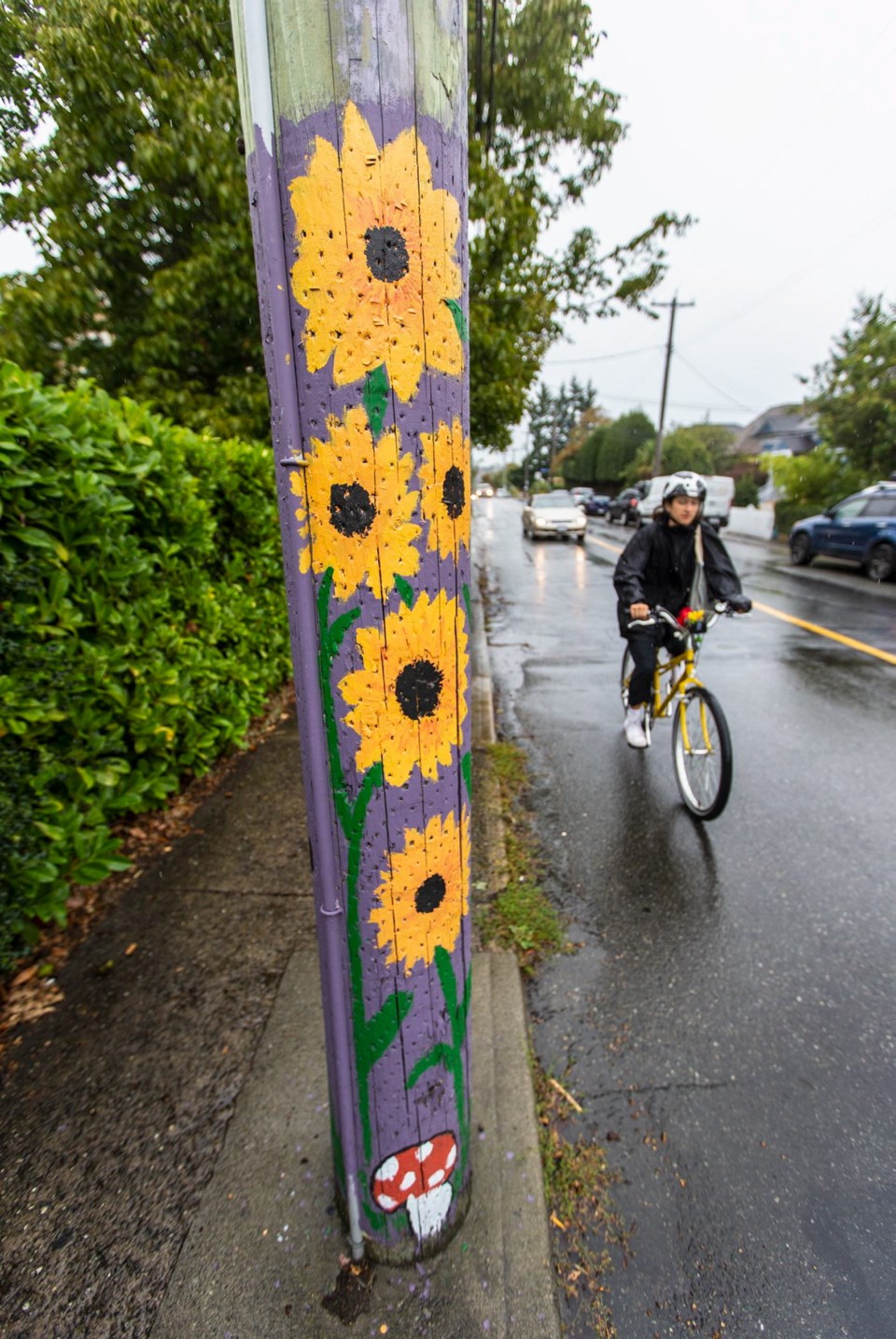The community activist and artist who started a painted power poles project in Fernwood 11 years ago said she understands why B.C. Hydro is asking for the effort to end.
About two weeks ago, B.C. Hydro notified Fernwood’s Neighbourhood Resource Group that it no longer wanted the group to hand out free paint and promote the painting.
“I get it. Any art project has its end date, and 11 years is a pretty good run for any good art project. I understand,” said Beth Threlfall, who joined forces with the Neighbourhood Resource Group in 2011.
But a few days after hearing the news, she started wondering what would happen to the colourful poles lining the streets of her neighbourhood. Then people started stopping her on the street, asking her when free paint, salvaged from the Hartland Landfill, would be handed out, and when they would paint the poles.
“It’s really obvious people care about the poles because the feedback and support has been really great and really positive,” said Threlfall. “People love the poles. It does mean a lot to a lot of people. People know they’ve entered a really special neighbourhood when they start looking around.”
Threlfall phoned Ted Olynyk, B.C. Hydro community relations manager, and the two had a good conversation, she said.
Olynyk said that it had become challenging to manage other less popular projects on Gabriola Island, Nanaimo, Courtenay and Comox. More importantly, there were safety and operational aspects of the project.
“No hard feelings,” Threlfall said. “I’m not going to start some sort of pole revolution. I don’t have my fist up in the air. I absolutely understand and I don’t think of them as bad guys.”
The poles will not be painted over. Nature will take it course, said Threlfall, who hopes the poles will weather well.
“A lot of the original poles from 2008 are still out there. They’re looking a little faded but you can still see the design and they still look lovely and they still tell us a story,” she said.
The natural life of a power pole is about 50 years so it will take a long time for the poles to disappear.
“It’s so crazy the knowledge I have of power poles now,” she added with a laugh.
Olynyk said B.C. Hydro is in a difficult position.
“We don’t want to seem as if we’re against art. This is not an art issue. Of course, there are some great designs and we tried to find a way to make it work, but it became too problematic across the province,” he said.
The poles were greeted with varying results on Gabriola Island, Nanaimo and Courtenay and Comox.
“Some people really liked it on Gabriola. Others weren’t happy that they would be able to see the pole and they didn’t want to see them. They didn’t want them painted because it took away the beauty of the wood,” Olynyk said.
In Nanaimo, some people weren’t happy with the designs and the artwork. People complained about the poles along the old Island Highway.
One artist approached B.C. Hydro, asking it to paint over their pole because the artwork had faded.
“So how do you allow Fernwood to have painted poles but no other community?” he asked.
Painting the power poles also hides defects in the poles and speeds up degradation.
“When you paint around it, you’re sealing in moisture. Water needs to come out of the bottom of the pole. If you paint around it, there’s no place for any water to go,” Olynyk said.
There’s also the concern that someone could be injured while painting a pole. B.C. Hydro could be liable for giving approval, Olynyk explained.
In the end, the power poles are a piece of equipment and B.C. Hydro has to work for all ratepayers and try to make its assets last as long as possible, he said.
“Nothing lasts,” Threlfall said. “Everything has its end. I hope the best for the neighbourhood and I’m really grateful for the opportunity I had. I met so many great people. And the ripple effect — I had people from all over North America contacting me to talk about pole-painting.”



